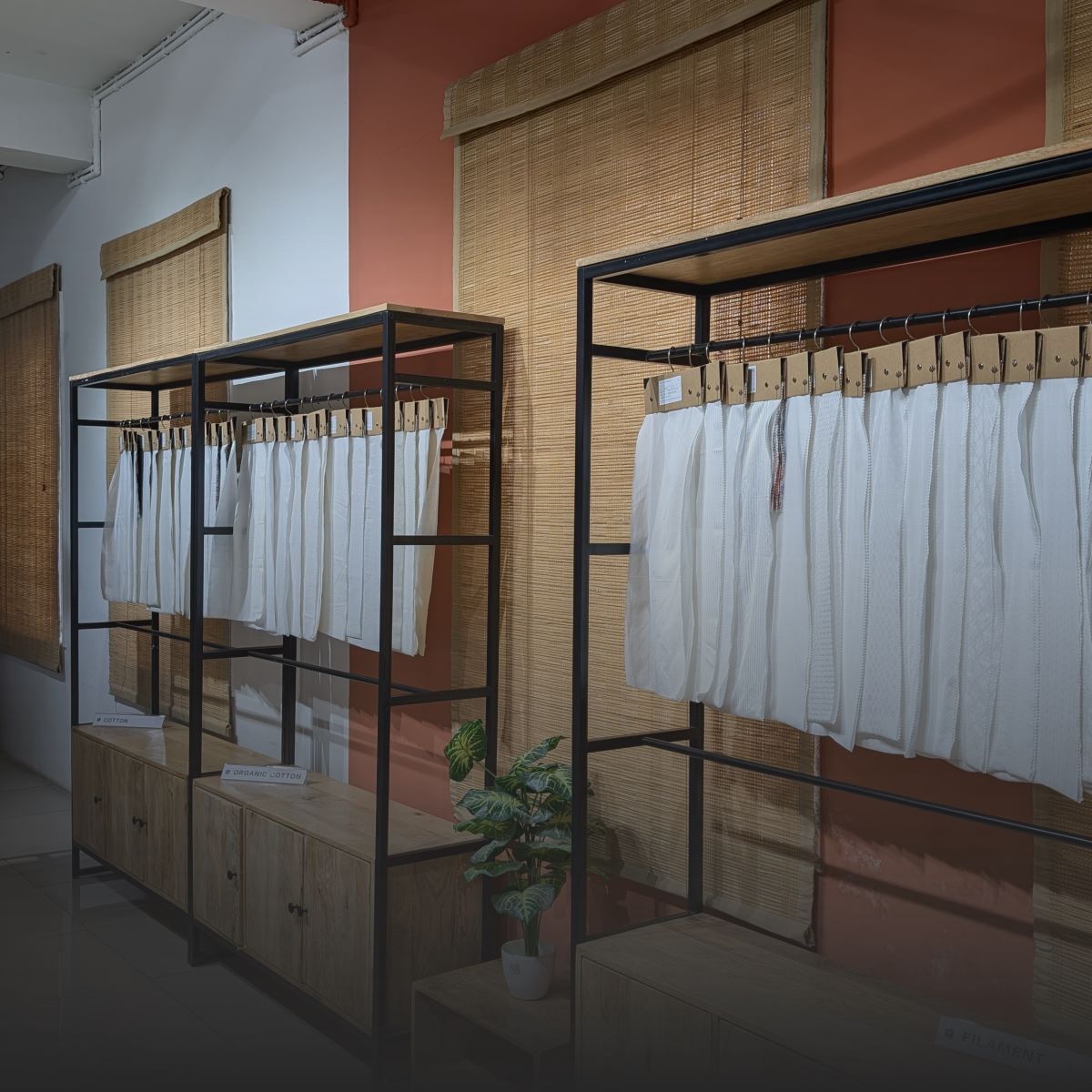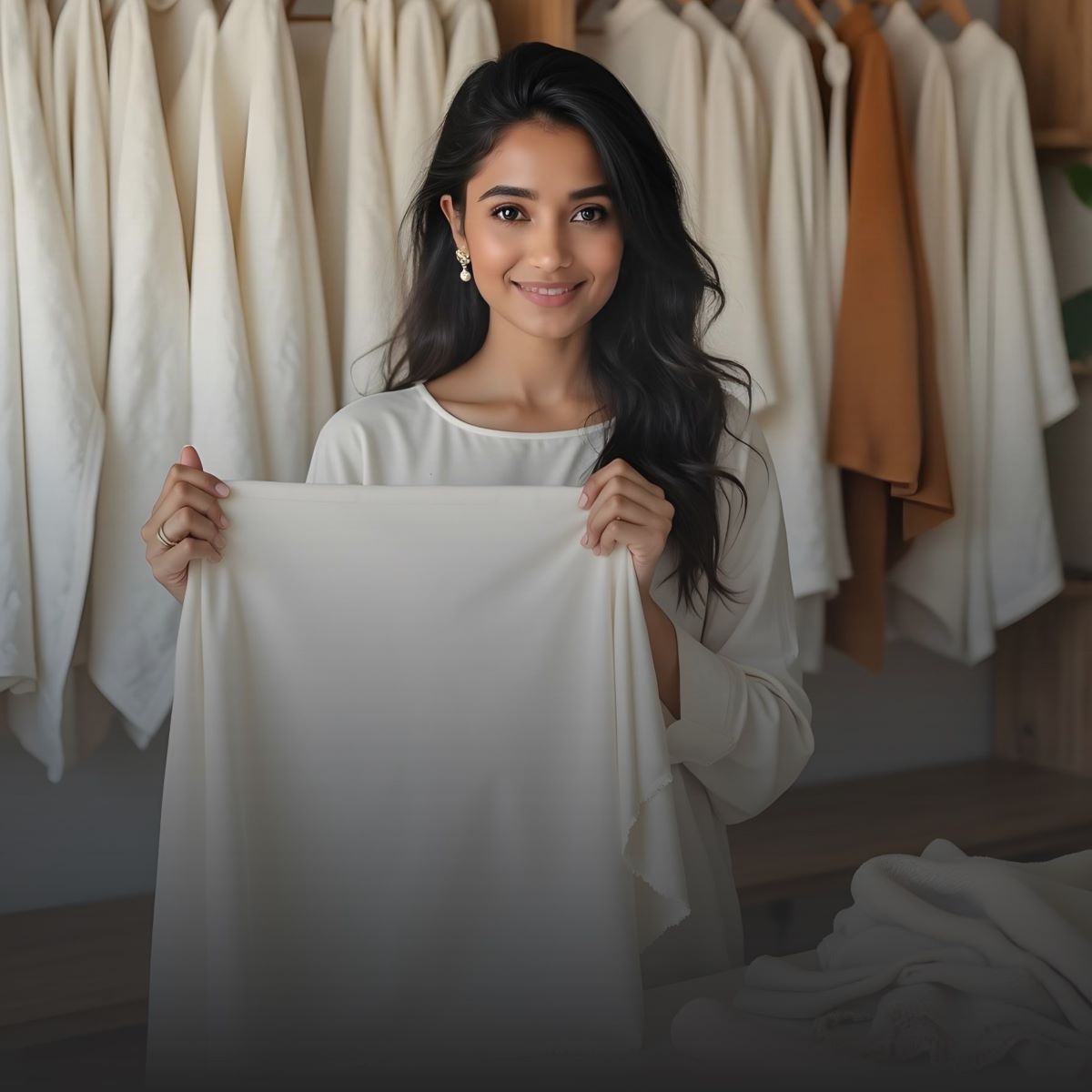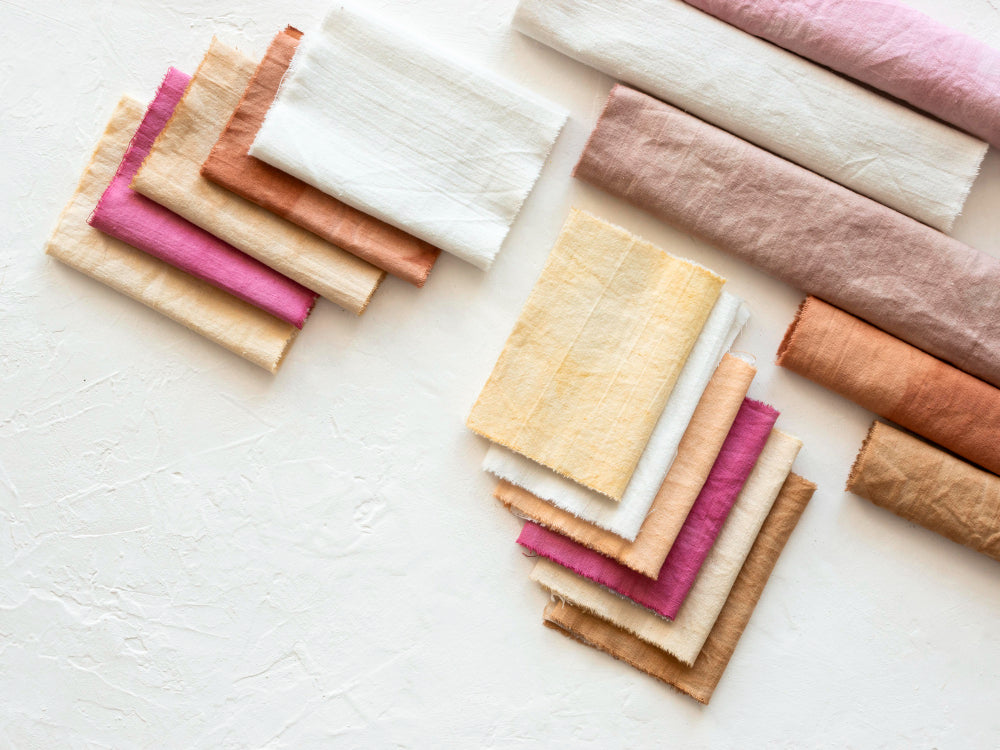In the fashion world, sustainability has gone from being a passing fad to a must-have. Consumers who care about ethics and the environment are asking fashion brands to rethink their core practices, starting with the materials they use.
The materials we use for each garment have a big effect on how much damage we do to the world. Find out about eco-friendly fabrics like organic cotton, linen, and viscose.
This blog carefully compares these three materials, looking at everything from how they affect the world to how they can be used in design. As a creator or buyer trying to build a long-lasting business, you need to know about these fibers in order to responsibly source and make fabrics.
What Makes A Fabric Sustainable?

Before analyzing different fibers, it's essential to know the main things that make textiles sustainable:
- Low effect on the environment: doesn't need much energy, water, or chemicals.
- Biodegradability: breaks down naturally without polluting the environment in the long run.
- Ethical production: Fair labor and safe working conditions are guaranteed by ethical production.
- Renewable resources: These come from plants or trees that grow back without hurting the earth.
Let's see how these groups rate viscose, organic cotton, and linen.
1. Organic Cotton
Overview:
To grow organic cotton, non-GMO seeds are used, and no synthetic chemicals or fertilizers are used. Instead, it uses natural ways to keep the earth healthy and safe, such as crop rotation, composting, and beneficial insects. It is often used in eco-friendly fashion because it is soft and lets air pass through.
Environmental Impact:
- Use of Water: Organic cotton uses about 85% less water than regular cotton, but it still needs more water than linen.
- Chemicals: No harmful fertilizers or pesticides are used, so the land and water are not polluted.
- Carbon Footprint: About 16.4 kg of CO2 are released when 1 kg of cotton is made.
- Breaks down naturally: Yes, organic cotton breaks down naturally.
Benefits:
- Safe for Farmers and Workers: They won't be exposed to dangerous pesticides.
- Kind to Skin: Hypoallergenic and doesn't irritate, so it's great for people with sensitive skin.
- Biodegradable and compostable: If the right conditions are met, it breaks down in a few months.
- Good for Everyday Wear: T-shirts, dresses, loungewear, and baby clothes go well with it.
Challenges:
- Water Use Still a Concern:This type of cotton still needs a lot of water, even though it uses less than regular cotton. In dry areas, this can be a big problem.
- Land Intensive: It needs more farmland because the yields per acre are smaller.
- Higher Cost: Costs are higher because farming requires more work, which drives up the price of the fabric.
Best Use Cases:
Organic cotton is great for basics, underwear, kids' clothes, and any other clothing that needs to be soft without hurting your skin. Working with checked "fabric suppliers USA" makes sure you get approved materials from supply chains that are easy to see.
2. Linen

Overview:
Linen comes from the stalks of the resilient flax plant, thriving even in poor soil and needing minimal irrigation or pesticides. It's one of the most environmentally efficient natural fibers on the market and has been used in textiles for over 4,000 years.
Environmental Impact:
- Use of Water: Linen doesn't need much water; rainwater is usually enough, and it doesn't need to be watered very often.
- Chemicals: Pesticides are used very little (if at all), and no chemicals are required in order to make yarn.
- Carbon Footprint: Like organic cotton, making 1 kg of linen creates about 16.7 kg of CO2 equivalent.
- Biodegradability: Linen breaks down naturally and can be recycled.
- Zero Waste: Due to the fact that the flax plant is utilized as a whole, very little of it is discarded.
Benefits:
- Very good for the environment: flax can grow in poor soils, which means less pressure on good farms.
- Fewer pesticides and water: Often grown without watering.
- Lasts a long time: Clothes can last for decades if properly kept and cared for.
- Biodegradable by nature: It breaks down in less than six months.
- Regulates Temperature: This keeps you cool in hot weather and warm in cold weather, making it great for resort wear and transitional wear.
Challenges:
- Wrinkles Easily: Some people might not like how relaxed and creased it looks.
- Complex Processing: Retting, the process of separating the fiber from the stalk, can take a long time and cost a lot of money.
- Limitations on Supply: Because of seasonal growing cycles and limited growing areas, fewer "fabric wholesalers" carry big inventories.
Best Use Cases:
Perfect for dressy, airy clothes like shirts, dresses, and casual suits. Because it is so light, linen is often used in resort wear and warm-weather designs.
3. Viscose

Overview:
Viscose, which is sometimes called rayon, is a kind of semi-synthetic fiber that is made from recycled cellulose, which is usually found in wood pulp. It comes from plants that can grow again, like bamboo or eucalyptus, but it goes through a lot of chemicals to become cloth.
Environmental Impact:
- Raw Material: Made from renewable wood pulp, it is a cloth made from plants that break down naturally.
- Production: The process used to make viscose affects how long it lasts. Today, viscose can be made in closed-loop systems that produce little chemical waste. However, older ways can be harmful to the environment.
- Biodegradability: Viscose breaks down more easily than synthetics because it is recyclable.
- Sourcing: To keep forests from being cut down, sustainable viscose depends on getting wood from responsible sources.
Benefits:
- Soft, Drapey, Luxurious: It feels like silk but costs less.
- Biodegradable: It can break down entirely if it doesn't have any chemical layers on it.
- Versatile Design Options: Perfect for shirts, dresses, linings, and styles with a lot of flow.
- Moisture-Absorbent: It feels cool and airy against the skin.
Challenges:
- Chemical Use in Production: Carbon disulfide is utilized, which may be hazardous if not managed appropriately.
- Deforestation Risk: Irresponsible procurement may result in the deforestation of historic woodlands.
- Water Pollution: Discharges from viscose mills are associated with river pollution unless regulated through closed-loop systems.
Best Use Cases:
Viscose is a fabric that mid-range fashion lines use when they want to mix style and price. Also, wholesale fabric manufacturers USA sell a lot of it and offer Lenzing-certified alternatives that are better for the earth.
Comparison Table: Sustainability At A Glance
|
Feature |
Organic Cotton |
Linen |
Viscose |
|
Source Material |
Non-GMO cotton plant |
Flax plant |
Wood pulp (eucalyptus, etc.) |
|
Water Use |
Moderate (less than regular cotton) |
Very low |
Moderate to high |
|
Chemical Input |
Minimal |
Minimal |
High (unless closed-loop) |
|
Biodegradability |
Yes |
Yes |
Yes |
|
Durability |
Medium |
High |
Medium |
|
Best Uses |
Everyday basics |
Warm-weather garments |
Dresses, blouses, linings |
|
Certifications to Look For |
GOTS, USDA Organic |
EUROPEAN FLAX® |
FSC, OEKO-TEX, LENZING™ |
Choosing the Right Fabric for Your Brand
Which of these three materials you choose will depend on your design goals, the people you want to reach, and your environmental concerns. To sum up quickly, here it is:
- Think about opting for organic cotton in your everyday essentials; it offers softness, is gentle on the skin, and is sourced ethically.
- Consider opting for linen if you're looking for eco-friendly, durable, and breathable fabrics that provide a natural aesthetic.
- For a sense of fluidity, drape, and a hint of luxury in your designs, you might want to think about using viscose – keep in mind the importance of responsible sourcing.
Learn what a reputable "Fabric Sourcing Platform" like Fabriclore can do for you. There, you can look at options that aren't just measured by how sustainable they are. Get lost in a world of texture, longevity, and access to people all over the world that will help you source better.
Final Thoughts

Sustainable fashion starts with innovative material selections. Organic cotton, linen, and viscose have several benefits. Softness, flexibility, low-impact farming, and high-end look are examples. Choose the correct cloth, but you also need the proper merchants to source sustainably.
When brands collaborate with wholesale fabric manufacturers in the USA, they may obtain small-batch production, transparent sourcing, and unique designs that reflect their values. Fashion and responsibility can coexist whether you value performance, ethical sourcing, or the environment.
FAQ’s
1. What Is Sustainable Fashion, And Why Is It Important?
Ans: Sustainable fashion means the design and production of apparel that minimizes environmental impact and advocates for ethical labor standards. The fashion business significantly contributes to pollution, waste, and unethical labor practices.
- Minimizes environmental impact.
- Promotes ethical working conditions.
- Supports long-lasting, quality clothing.
2. How Do Organic Cotton, Linen, And Viscose Compare In Terms Of Sustainability?
Ans: Organic cotton is grown without harmful chemicals, linen uses less water and grows quicker, and viscose (when sourced responsibly) offers a low-impact alternative to synthetics. Each has unique benefits based on water use, biodegradability, and production footprint.
- Organic cotton: Chemical-free, breathable.
- Linen: Water-efficient, strong, naturally insect-resistant.
- Viscose: Soft, drapey, but relies on closed-loop production.
3. What Are Sustainable Textiles, And Why Are They Essential In Fashion?
Ans: Sustainable textiles are clothes that are made using processes that conserve resources, reduce waste, and support ethical labor. They are essential in moving the fashion industry toward circular, low-impact systems.
- Often biodegradable or recyclable.
- Use less water and fewer chemicals.
- Ensure an ethical supply chain.
4. How Do You Make Clothing More Sustainable As A Brand Or Designer?
Ans: Making clothing sustainable means using eco-certified fabrics, reducing waste during production, and working with responsible fabric wholesalers or fabric-sourcing platforms that provide a transparent supply chain.
- Use low-impact materials.
- Choose ethical fabric suppliers USA.
- Focus on durability and minimizing design waste.
5. Why Is Fabric Choice So Crucial In Sustainable Fashion?
Ans: The fabric you choose determines not only the comfort and style of the garment but also its environmental impact. Responsible fabric choice can reduce water use, lower carbon emissions, and improve biodegradability.
- Affects wearability and comfort
- Affects longevity and recyclability
- Affects your brand's sustainability profile





